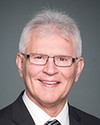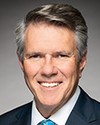Yes, thank you.
To Ducks Unlimited, in my riding of Kootenay—Columbia, I've worked with Ducks Unlimited on several projects, and absolutely, it takes active management to keep a healthy wetland. Thank you for that.
My question will be for Nature Canada, and then perhaps I'll go back to both of you if there's time available.
In the brief that you submitted to the committee, you noted that Canada is about to lose a significant amount of federally protected land in the transfer of community pastures and grasslands to the Government of Saskatchewan. How important are these areas for conservation? What does the government need to do to ensure that a plan is in place to protect the ecological integrity of the grasslands before the transfer happens? Should these lands actually be transferred? Is government doing enough to make sure that if they do leave, they protect ecological integrity?




